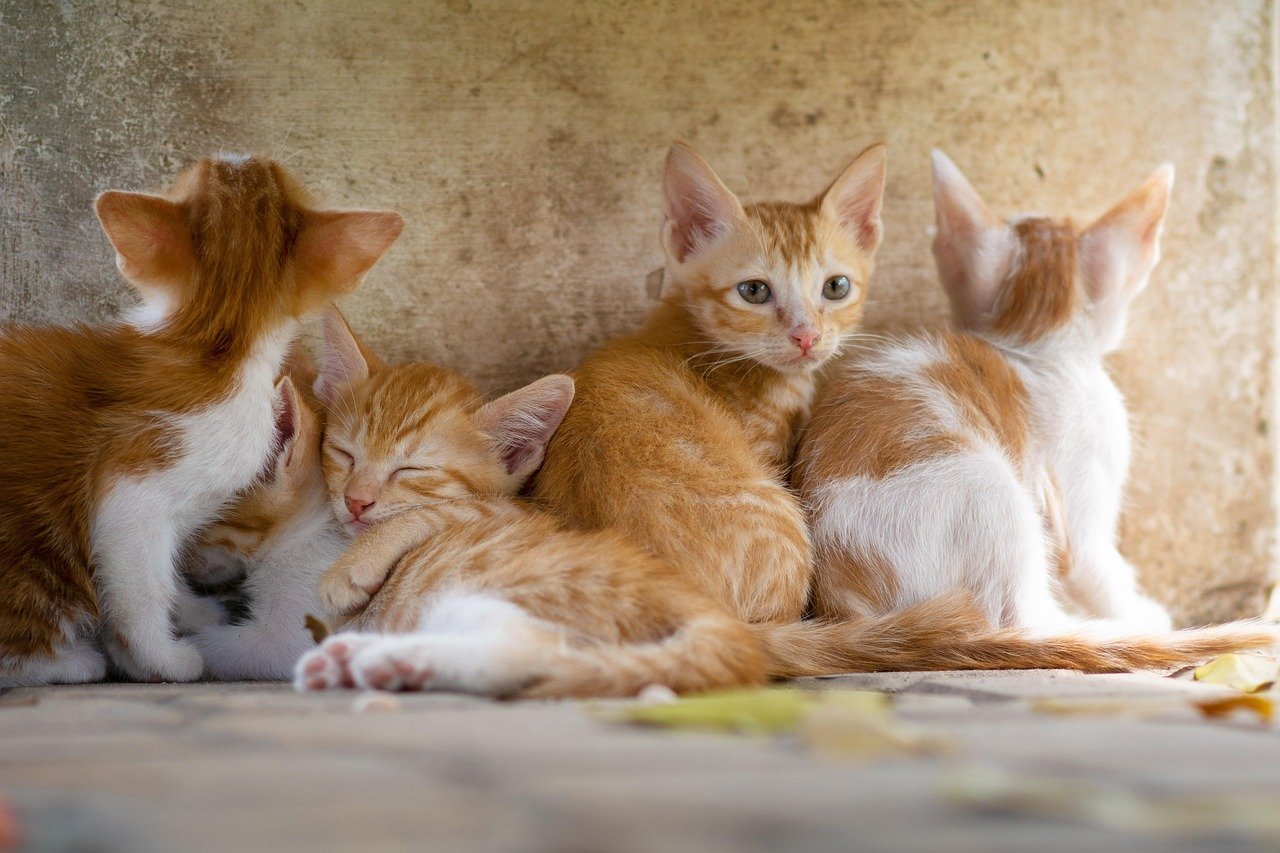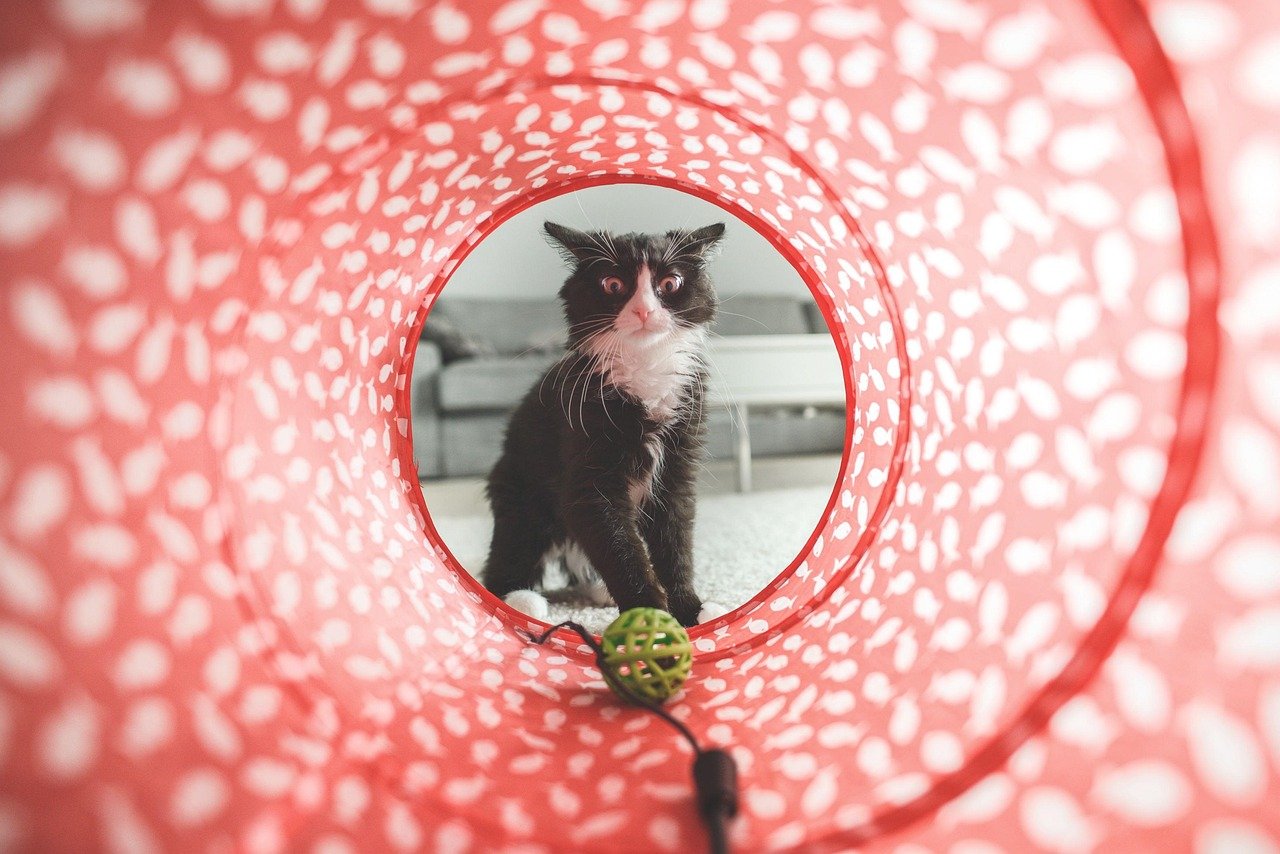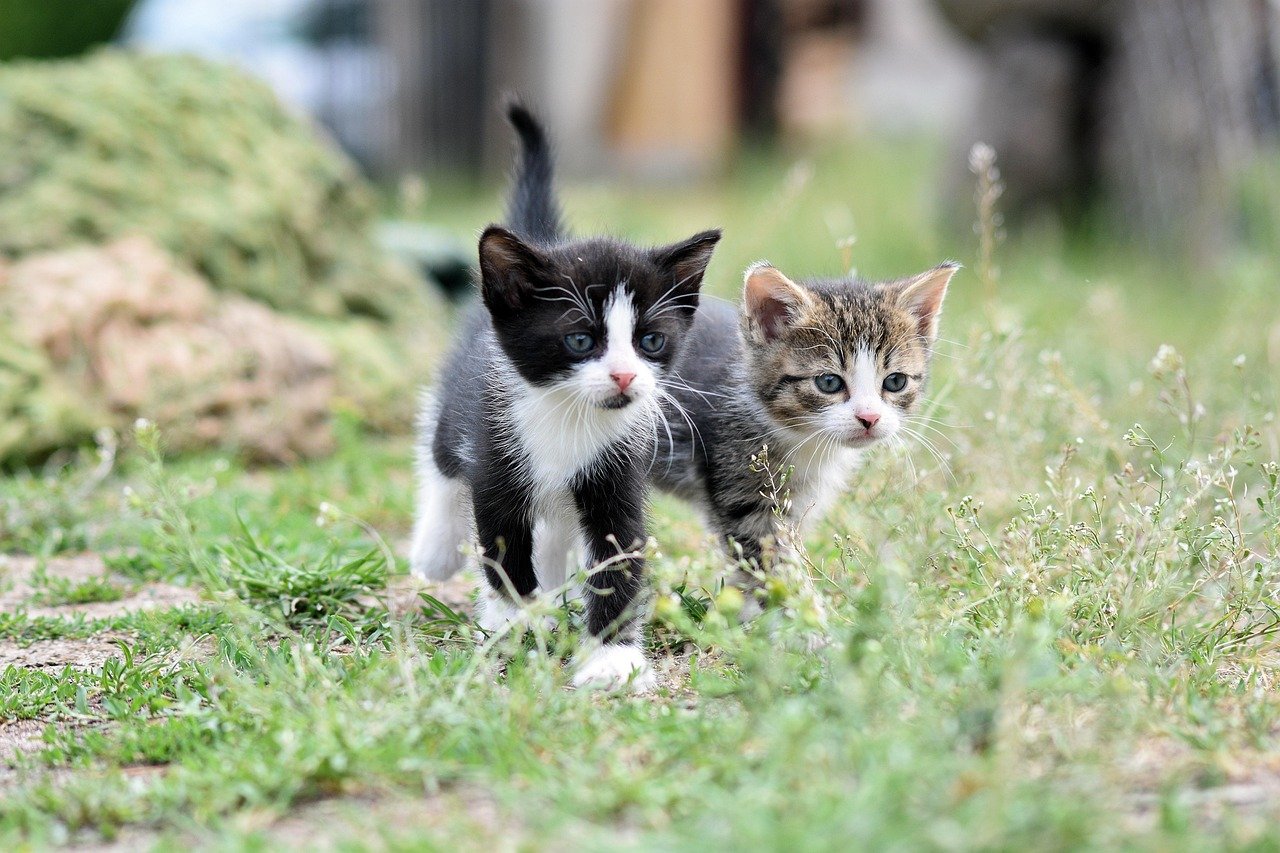Have you ever watched a cat hide beneath the couch at the sound of a doorbell, or stiffen at the touch of your hand, and wondered what’s going on behind those watchful eyes? Supporting a cat who’s emotionally guarded can feel like trying to unlock a treasure chest with a thousand keys—rewarding, mysterious, and sometimes a little heartbreaking. Yet, the journey to earning a wary cat’s trust is filled with moments of quiet triumph, gentle breakthroughs, and a deepening bond that’s unlike any other. If you’re determined to help your shy or closed-off feline blossom, you’re about to embark on a compassionate adventure that calls for patience, empathy, and a sprinkle of creativity. Let’s discover how to help your cat feel safe enough to let their true personality shine.
Understanding the Nature of Emotional Guardedness in Cats

Cats who are emotionally guarded often carry invisible baggage from their past—be it trauma, neglect, or simply a lack of socialization. This guardedness isn’t a sign of a “bad” cat; it’s a survival instinct finely tuned over generations. Unlike outgoing felines, these cats might hide, flinch, or become rigid when approached. It’s important to recognize that their distance isn’t personal. Instead, they’re communicating that they need more time and space before opening up. Imagine moving to a new country where you don’t speak the language—trust takes time to build. Understanding this foundation is the first step in supporting them.
Recognizing Signs of a Guarded Cat

Emotionally guarded cats display subtle and not-so-subtle cues that reveal their discomfort. You might notice them slinking along the walls, avoiding eye contact, or retreating under furniture at the slightest noise. Some may freeze or flatten their ears when approached, while others might hiss or growl if cornered. Even in moments of calm, their bodies might remain tense, tails tucked or low. Recognizing these signs is crucial, as it allows you to adjust your approach and avoid overwhelming them. Observing and learning their unique “tells” can be the key to helping them feel understood.
Respecting Personal Space and Boundaries

For an emotionally guarded cat, personal space is sacred. It’s tempting to try to scoop them up or flood them with affection, but this often has the opposite effect. Instead, give them the freedom to control their own space. Avoid forcing interactions—let them come to you when they’re ready. Set up cozy hideaways in quiet areas so they have somewhere to retreat and feel safe. Just as we might need alone time after a stressful day, cats benefit from having their boundaries respected. When they realize you’re not a threat, their curiosity may slowly begin to outweigh their fear.
Creating a Safe and Calm Environment

A peaceful environment is essential for emotionally guarded cats. Loud noises, sudden changes, and chaotic households can make them more anxious. Try to keep their living area quiet and predictable, with familiar scents and hiding spots. Use soft voices and slow movements when interacting with them. Consider using calming pheromone diffusers or sprays to help create a soothing atmosphere. The more tranquil their environment, the more likely they are to relax their guard. Think of their space as a sanctuary, where nothing bad happens and every day feels safe.
Establishing Consistent Routines

Consistency is comforting for cats. Feeding, playtime, and cleaning should happen at the same times each day. Predictable routines help emotionally guarded cats anticipate what’s coming, reducing their stress. Even the way you enter a room or call their name should follow a gentle pattern. Over time, these routines become signals of safety and stability. Just as children thrive on bedtime routines, cats feel more secure when life follows a gentle rhythm. Consistency, above all else, is the language of trust.
Using Gentle and Non-Threatening Body Language

Cats are experts at reading body language, and emotionally guarded cats are especially sensitive. Approach them by lowering yourself to their level, avoiding direct stares (which can be seen as threats), and blinking slowly to show friendliness. Move slowly and deliberately, keeping your hands visible and unthreatening. Avoid looming over them or reaching out suddenly. Sometimes, just sitting quietly in their presence, without making any moves, can communicate volumes. With time, these non-threatening gestures tell your cat that you respect their comfort zone.
Letting the Cat Set the Pace

Patience is your greatest ally. Let your cat decide when to approach you, explore new spaces, or try new things. Never rush them—progress might come in tiny steps, and that’s okay. Some days they may take two steps forward and one step back. Celebrate the small victories: a hesitant sniff, a brief touch, or even just sitting in the same room with you. By letting the cat control the pace, you’re giving them a sense of agency, which is deeply empowering for a shy or fearful feline.
Building Trust Through Positive Associations

Associating yourself with good things is a powerful way to win a guarded cat’s trust. Offer treats, toys, or gentle words during and after interactions. Feed them at the same time you’re nearby, or toss a favorite treat in their direction when you enter the room. Over time, they’ll start linking your presence with positive experiences. It’s like leaving breadcrumbs of kindness for them to follow. These positive associations lay the foundation for trust and companionship, one treat at a time.
Utilizing Interactive Play to Break the Ice

Playtime is a wonderful, low-pressure way to bond with an emotionally guarded cat. Wand toys, laser pointers, or feather teasers can coax even the shyest cat out of hiding. Play not only relieves stress but also shifts their focus from fear to fun. Keep play sessions short and gentle, allowing your cat to “win” by catching the toy occasionally. As their confidence grows, so does their willingness to interact with you. Play is the universal language that bridges the emotional gap.
Incorporating Enrichment and Mental Stimulation

Boredom can make anxious cats even more withdrawn, while mental stimulation encourages curiosity and confidence. Puzzle feeders, cat trees, and window perches can transform their environment into an engaging playground. Rotate toys regularly to keep things fresh, and consider safe outdoor enclosures for a change of scenery. Enrichment gives your cat reasons to explore and interact, gently nudging them out of their shell. Think of it as giving them the tools to rediscover joy at their own pace.
Encouraging Exploration With Patience

Exploration is a big step for guarded cats. Open doors to new rooms, place enticing objects nearby, or scatter treats along a path to encourage gentle investigation. Never force them out of hiding or drag them into unfamiliar territory; instead, use curiosity as your ally. If they retreat, that’s okay—try again later. Each exploratory step helps them realize the world isn’t as scary as they thought. Over time, these small adventures build independence and bravery.
Choosing the Right Kind of Touch

Not every cat enjoys petting, and for emotionally guarded cats, the right kind of touch is essential. Start with slow, gentle strokes in areas most cats tolerate—like the cheeks or under the chin. Watch their body language closely: if they stiffen, stop. Some cats prefer to rub against your hand rather than being stroked. Respect their preferences and never force physical affection. The right touch, offered at the right moment, can be profoundly healing.
Communicating With Your Voice

The tone and volume of your voice matter more than you might think. Speak softly, using their name in a calming, sing-song tone. Avoid yelling or sudden loud noises, which can set back progress. You can even read aloud or hum while in their presence, creating a soothing background. Over time, your voice becomes a familiar, comforting presence. Like a lullaby, gentle words can ease anxiety and build a sense of connection.
Providing Vertical Space and Hideaways

Cats feel safer when they can observe their world from above or retreat to hidden spaces. Install cat trees, shelves, or window perches to give them vertical territory. Cardboard boxes, cat caves, or covered beds also provide security. These safe zones allow your cat to relax and watch at their own pace. The more options they have for retreat and observation, the more confident they’ll feel as they navigate their environment.
Making Use of Feline Pheromones

Feline pheromone diffusers or sprays can create a calming atmosphere that encourages relaxation. These products mimic the natural pheromones cats use to mark safe areas, signaling to your cat that everything is okay. While not a cure-all, pheromones can complement your other efforts to reduce stress. Use them in areas where your cat spends the most time, and observe if their behavior improves. Sometimes, a little invisible reassurance goes a long way.
Involving Other Pets Carefully

If you have other animals, their presence can be both a comfort and a stressor. Introduce new pets slowly, allowing your emotionally guarded cat to observe from a distance. Use barriers like baby gates or closed doors at first, and monitor body language closely. Never force face-to-face meetings, and always provide escape routes. With patience, your cat may grow curious and even form friendships, but let them set the pace.
Seeking Support From Cat-Savvy Friends or Family

Sometimes, a shy cat will warm up to one person but remain aloof with others. If you share your home, educate friends and family about your cat’s needs. Ask them to respect boundaries, use quiet voices, and offer treats or toys. The more your cat sees consistent, gentle behavior from everyone, the quicker they’ll learn that people are safe. Building a supportive community around your cat can accelerate progress.
Monitoring Progress and Adjusting Strategies

Supporting a guarded cat is an evolving process. Keep a journal of small victories and setbacks—did they explore a new room, allow a new type of touch, or play for the first time? If you notice regression, try to identify any recent changes or stressors. Be flexible and willing to adjust your approach as needed. Sometimes, what worked yesterday might not work today, and that’s okay. Growth is rarely a straight line.
Understanding When to Seek Professional Help

Some cats struggle with deep-rooted anxiety that requires more than patience and love. If your cat remains withdrawn, aggressive, or shows signs of severe stress despite your best efforts, consider reaching out to a feline behaviorist or veterinarian. These professionals can rule out medical issues and create tailored behavior plans. There’s no shame in asking for help—in fact, it’s a sign of deep commitment to your cat’s wellbeing.
Celebrating Every Little Success

Every tiny breakthrough deserves recognition. Whether it’s a tentative nose sniff, a soft purr, or simply sitting nearby without fear, these moments are proof of progress. Celebrate these victories with gentle praise, extra treats, or a quiet smile. Each success is a step toward a stronger, more trusting bond. Remember, the journey with an emotionally guarded cat is made up of thousands of little wins—cherish each one.
Committing to Lifelong Patience and Compassion

Supporting an emotionally guarded cat is not a quick fix, but a lifelong journey of patience, understanding, and compassion. Your cat may never become a lap cat or the life of the party, and that’s perfectly okay. What matters most is that they feel safe, accepted, and loved exactly as they are. The trust you build together will be deep and enduring—a quiet, beautiful partnership. Isn’t it amazing how the gentlest hearts can teach us the greatest lessons?
Hi, I’m Bola, a passionate writer and creative strategist with a knack for crafting compelling content that educates, inspires, and connects. Over the years, I’ve honed my skills across various writing fields, including content creation, copywriting, online course development, and video scriptwriting.
When I’m not at my desk, you’ll find me exploring new ideas, reading books, or brainstorming creative ways to solve challenges. I believe that words have the power to transform, and I’m here to help you leverage that power for success.
Thanks for stopping by, Keep coming to this website to checkout new articles form me. You’d always love it!






